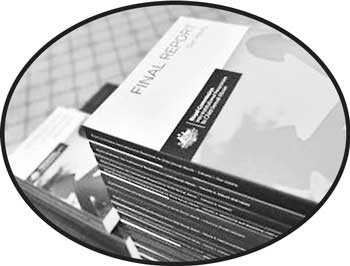Monday Nov 03, 2025
Monday Nov 03, 2025
Saturday, 23 June 2018 00:10 - - {{hitsCtrl.values.hits}}
 A national apology will be delivered by the Prime Minister to child sexual survivors, victims and their families on 22 October to coincide with the national children’s week. It is being hailed as an important step to help the healing process.
A national apology will be delivered by the Prime Minister to child sexual survivors, victims and their families on 22 October to coincide with the national children’s week. It is being hailed as an important step to help the healing process.
Outlining the formal response of the Government to the Royal Commission into Institutional Responses to Child Sexual Abuse, Prime Minister Malcolm Turnbull said: “Now that we’ve uncovered the shocking truth, we must do everything in our power to honour the bravery of the thousands of people who came forward.”
The Government will also create a national office for child safety commencing on 1 July.
“Come 1 July, we will have a truly national redress scheme with more than 90% of survivors estimated to be covered,” the Prime Minister said.
While accepting 104 of the 122 recommendations of the Commission aimed at the Federal Government, the balance recommendations are also receiving the Government’s consideration.
While welcoming the apology announcement, survivor groups called on the Government to implement all of the Royal Commission recommendations.
Among such groups was the Blue Knot Foundation, whose President Dr. Cathy Kezelman commented that the apology is “very significant and much welcomed”.
“For some people, (the apology) is going to be very significant. The Government of this country has heard what has happened to them, has believed them, and has now said, sorry, this never should have happened in institutions. For others, it will be part of their journey,” she said.
The Royal Commission took five years to end the deliberations. The final report was made up of 17 volumes. It contained accounts given by 1,200 witnesses and over information gathered at more than 8,000 private sessions with survivors.
Some of the highlights of the findings were:
nOne of the five survivors (21%) was abused in more than one type of institution. The evidence related to 3,489 institutions.
nHalf of survivors were aged between 10 and 14 the first time they were abused. Girls were more likely to be younger at the time of abuse.
nOf those abused in a religious institution, 61.4% were in a Catholic institution, 14.8% Anglican, 7.2% Salvation Army and the rest in various denominations
nMost survivors (63.6%) were male
n93.8% were abused by a male
Child abuse in schools
Of the 17 volumes, the Commission said one volume is mandatory reading for all education professionals. It specifically focusses on institutional responses to child sexual abuse in schools. It examines the nature and adequacy of responses and draws out the contributing factors to child sexual abuse in schools. It makes recommendations to prevent child sexual abuse from occurring in schools.
According to the Commission, given “the foundational role of schools in the lives of almost every child, they have a unique responsibility to keep children safe. This is not only to fulfil their child protection responsibilities, but also because being safe and supported at school is essential for effective learning.”
Some of the key learnings highlighted by the Commission from its historical case studies suggest numerous governance failures have contributed to child sexual abuse occurring in schools. These include:
 poor leadership and governance, a lack of accountability, and a culture that prioritised protecting the school over the safety of children; inadequate complaints processes, investigation and disciplinary action contributed to school leaders and staff failing to act on complaints or meet their obligations to report matters to external authorities;
poor leadership and governance, a lack of accountability, and a culture that prioritised protecting the school over the safety of children; inadequate complaints processes, investigation and disciplinary action contributed to school leaders and staff failing to act on complaints or meet their obligations to report matters to external authorities;
in many cases, investigations were incompetent and not carried out by a qualified person or children were interviewed inappropriately;
individuals the subject of complaints not being disciplined or held to account – such as allowing teachers to resign when complaints of child sexual abuse were made, transferring them to other schools, or giving them positive references that enabled them to teach in other schools and thereby exposing other children to the risk of abuse;
poor management of non-teaching staff – such as failing to ensure that all staff who could come into contact with children are suitable and supported, including administrators, contractors, gardeners, sports coaches, parent volunteers and maintenance staff;
limited awareness of child sexual abuse among staff and inadequate training on policies and procedures may contribute to a failure to keep children safe in schools because it prevents staff from identifying and reporting potential indicators or ‘warning signs’ of child sexual abuse;
schools did not address the risks of private spaces on school grounds, which enabled perpetrators to be alone with children;
ensuring children are safe online is a growing area of concern. The nature of the online environment and the rapidly evolving ways in which it is being used create risks that need to be identified, considered and minimised to better protect children from harm.The Commission made a number of recommendations relevant to schools.